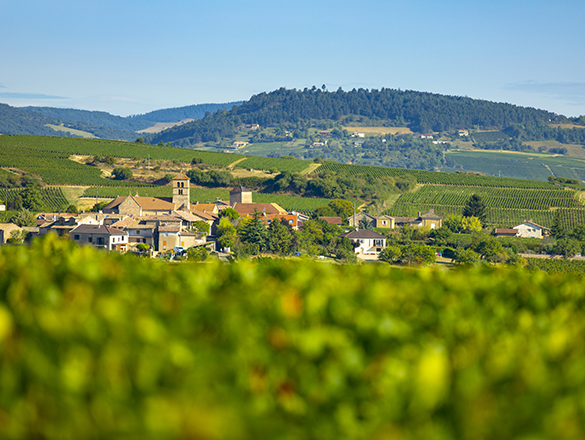
The vineyards of Bourgogne produce some great wines with a historical and international reputation. However, the region is not simply limited to its iconic appellations. In addition to its Village Premier Cru and Grand Cru AOCs, it also produces a range of wonderful Régionale and Village appellations to explore.
You will also find a full list of the Bourgogne’s Climats and lieux-dits on this page.
Check out the complete list of the 84 Bourgogne appellations.
However, your exploration has only just begun. Bourgogne wines have never before offered such high quality. Besides our range of internationally celebrated wines, try some of our lesser-known appellations where there are lots of surprises in store.
And for a fun way to find out more about the wines on offer, try out our “Which Bourgogne wine is right for me?” quiz, or check out Bourgogne Maps to take an interactive tour of the region.
Regional Appellation
VIGNOBLE DU MÂCONNAIS
31 juillet 1937
Whites - Chardonnay.
Reds and rosés - Gamay.
Area under vine:
Whites: 17.76 ha
Reds and rosés: 1.39 ha
Annual harvest:
Whites: 111,111 bottles
Reds and rosés: 10,521 bottles
Source: 5-year average, 2017-2021
An additional geographical denomination that is part of the Régionale Mâcon appellation in the Mâconnais. According to the 2005 specifications rules, the name Mâcon-Davayé refers to white, red, and rosé wines grown within a defined area in the village of Davayé.

A yellow gold color with silver highlights, Mâcon-Davayé whites are very expressive, marked with initial sweet notes of white-fleshed fruit juice like Reinette apple and Willliams pear. With oxygenation, these grow more floral, suggesting hawthorn and white garden flowers. In the mouth, they are smooth with a fruity body, their length underscored by a joyful freshness.
Mainly grown on the foothills of the Rock of Vergisson, the reds of Mâcon-Davayé are partially aged in oak, offering a compromise between the seriousness of a Gamay for laying down and the accessibility of a charming and indulgent quaffable wine. Aromas of small berries like raspberry, blueberry, and blackcurrant twirl around with touches of spice like white pepper, while in the mouth, they have a gourmet roundedness thanks to well-integrated tannins.

White: with its sunny aromatic character and smoothness on the tongue, this wine makes a natural pairing with all kinds of goat cheeses, such as the traditional AOC Mâconnais or its neighboring Charolais for a terroir-themed aperitif. Follow with grilled Bresse chicken supremes or mixed fried fish from the Saône. This white wine will also bring out the best in local freshwater fish dishes, such as Dombes carp with white wine, or pôchouse from Verdun-sur-le-Doubs.
Serving temperatures: 10-11°C as an aperitif, 11-12°C with food.
Red: try serving this red slightly chilled at a chic brunch, with a traditional mâchon bourguignon selection of local cold cuts, cheeses, and fruit tarts. Its spicy nose and fleshy structure will perfectly suit a bacon-filled brioche from the Morvan with some salad from the garden. It will also make a great match with a summer-fruit salad of gooseberries, redcurrants, blackcurrants, and raspberries, served with sponge fingers.
Serving temperature: 12-14°C.

Like a gateway to the rocky escarpments of Solutré-Pouilly and Vergisson, the terroir of the village of Davayé is limited to the east by the Petite Grosne river.
The Mâcon-Davayé appellation is located close by the river, alongside the vines of Saint-Véran.
The village occupies a strategic location and became the seat of one of the biggest castellanies of the Mâconnais, whose jurisdiction extended across the parishes of Davayé-Chevignes, Saint-Léger, Charnay, Solutré, and Vergisson.
These days, Davayé is known for its agricultural school, with its architecture clearly visible from the tops of the rocks, where future French and international winegrowers and enologists are trained.

The vines of Mâcon-Davayé grow on sloping ledges slightly angled towards the rising sun, with southeast and northeast variations, at an altitude of around 200 meters above sea level.
In these relatively low sectors, terrain from the Secondary Era some 150 million years ago is covered by clay-rich and sometimes sandy layers, alternating with veins of angular limestone that has been broken up by erosion.
